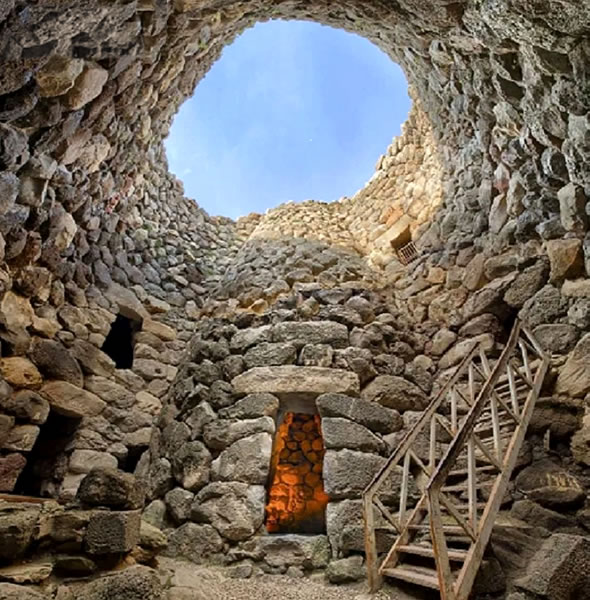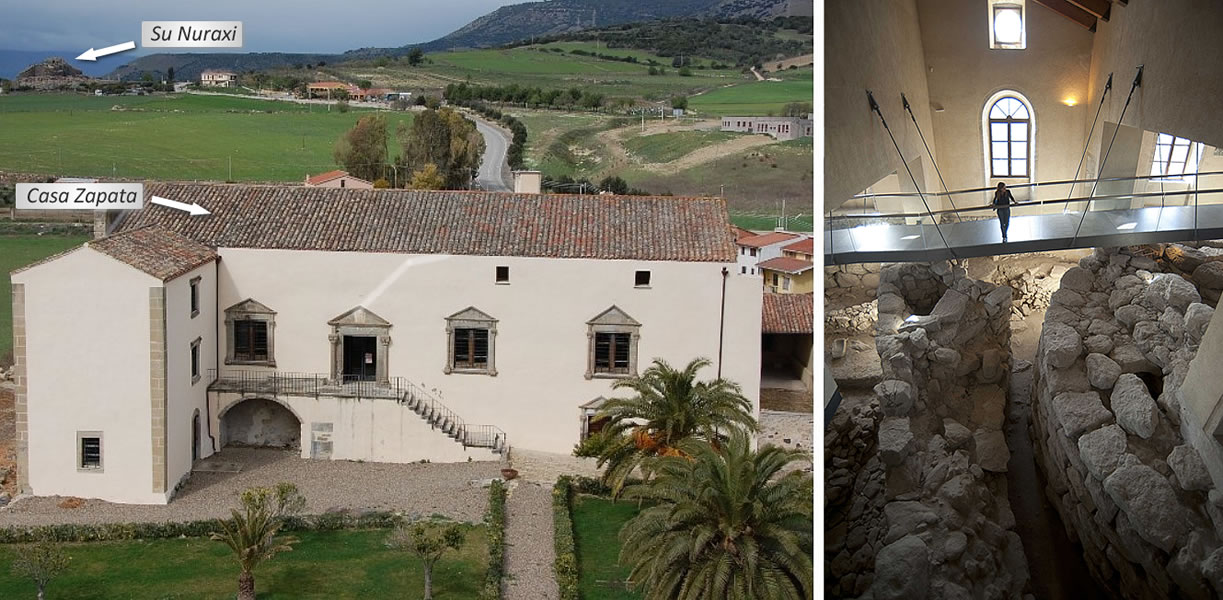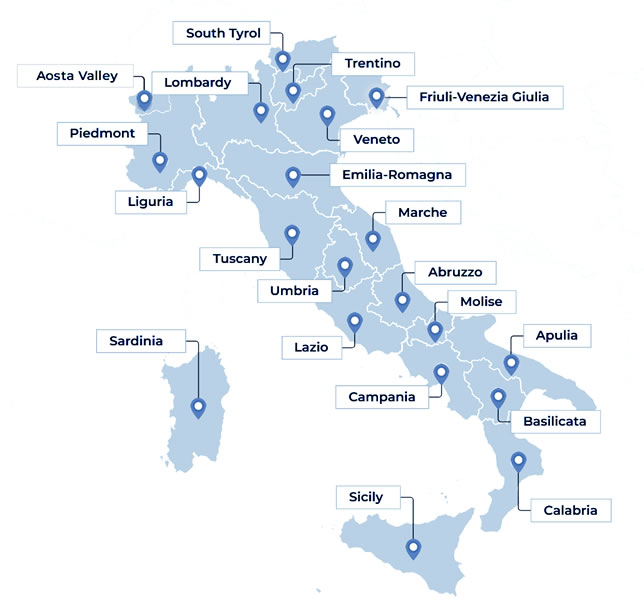

Explore Italy by place | region | time period
The Age of Metals » Barùmini (Medio Campidano, Sardinia)
For the people of the Mediterranean, the need to address the lack of their resources representing an incentive for the development of the traffics throughout the basin. They did not have much difficulties to find raw materials such as flint or obsidian need to build tools during the Paleolithic and Neolithic, but they faced more difficulties to find tin and iron in the following Age of metals. In fact, tin could be imported at a high price since the Bronze Age (an alloy composed of copper and tin) because it was mined in faraway places, more Cornwall and in small quantities Asturias and Andalusia. So then, between the III and the I millennium BCE, the period of bronze and iron working, the Neolithic societies became mainly focussed on trade.
Sardinia, the second largest island in the Mediterranean, occupied a strategic position in the basin and was rich in metals.
The nuragic civilization (so called for its typical constructions, the nuraghi) began to develop on the island in the second millennium BCE. It was one of the most original and advanced cultures of the time in the Italian territory: it was composed of several small sheep-farmers communities (perhaps more shepherds than peasants), it was very belligerent, and perhaps did not know writing.
It turned under Phoenicians, Carthaginians, Greeks, Etruscans and Romans influence over the centuries. The Phoenician colonization relegated the nuragic people in the inner areas of the island, but inserted them in the circuit of the Mediterranean trade from the VII century BCE. In fact, it reached its maximum development with them between 1000 and 500 B.C. which ended around 241 BCE when it became Roman. However, the Romanization succeeded only centuries later, in the Augustan and Julio-Claudia age (27 BC-68 AD), as shown by the late diffusion of villas and baths, which were typical Roman buildings.

The word nuraghe probably derives from the root nur, ancient indigenous word meaning 'cluster of stones', also in agreement with the Babylonian nuhàr, 'tower, temple'.
The nuraghe is a truncated-conical megalithic building with a single entrance. It has the shape of a defensive tower and was built with large dry boulders. It served as a dwelling, warehouse, lookout for the agricultural fields and domesticated animals, but especially as a fortress where people could shelter in case of neighboring tribes raids. Sometimes it could be part of a complex of religious worship or social gathering.
The nuraghi are the largest megalithic buildings in Europe. Their diffusion is limited only to Sardinia and began with the end of the ancient Bronze Age. Dating back to the second millennium BCE, about 7000 ones (most still buried or unknown) were erected , mainly between 1800 and 500 BCE.

The nuraghi were surrounded by a wall of stones and often grouped together, so they formed fortified housing complexes and for this reason each nuraghe was in visual contact with two other.
The most important evidence of this architecture is undoubtedly the archaeological area Su Nuraxi at Barumini. It is located on the western outskirts of Barùmini, about sixty kilometers from Cagliari. It consists of an imposing complex nuraghe (that is, it includes more than one tower) with the appearance of a medieval castle but older than almost 3000 years. It was built on a hill 238 meters above sea level, during the second millennium BCE. The village was built around its walls in the middle of the first millennium BCE and hosted up to 1000 inhabitants.
The complex Su Nuraxi (from the Sardinian 'the nuraghe') at Barùmini is one of the largest nuragic villages of Sardinia. On its original structure have been layered numerous interventions, so that today a site of great interest, included by UNESCO in the universal heritage of humanity in 1997.

The nuraghe and the village were strategically connected to a system of dozens of other nuraghi and nuragic sites, such as the one found below the Casa Zapata, less than a kilometre away.

Casa Zapata (or su Palazzu 'e su marchesu , the Marquis' palace) is a jewel of Sardinian architecture. From the end of the 16th century it was erected by the ancient and noble Aragonese family present in Sardinia from 1323 to 1946: the Zapatas (Çapata or Sapata).
In 1990, after the death of the last Baroness Donna Concetta Ingarao Zapata, the town Barumini bought the Zapata House which was abandoned to turn it into a museum. During the renovation works the workers discovered the remains of a nuragic settlement under the floors. Before they found a nuraghe nicknamed of the church (su Nuraxi 'e Cresia) and after other archaeological remains near the parish (su Nuraxi sa Cresia manna, large church). Excavations are still ongoing, the museum can be visited and through a system of suspended walkways and glass floors you can admire the nuragic complex from above.

Barùmini was a fief of the Zapata family until 1840. The presence of ancient buildings largely ruined was known even then but had never been identified. Some remains of buried nuraghi of Su Nuraxi began to be studied and unearthed a century later. The excavations have allowed to retrace the different phases of construction confirming the continuity of life of the entire complex until the first century BCE, in Roman times, even if the nuraghe was a ruin and was used by the Romans as a burial place for the dead.
In order to know more, you can visit:
- Wikipedia: [1]
This page was last edited on 8 June 2024

Open in Google Maps and find out what to visit in a place.
Go to: Abruzzo | Aosta Valley | Apulia | Basilicata | Calabria | Campania | Emilia Romagna | Friuli Venezia Giulia | Lazio | Liguria | Lombardy | Marche | Molise | Piedmont | Sardinia | Sicily | South Tyrol | Trentino | Tuscany | Umbria | Veneto

Text and images are available under the Creative Commons Attribution-ShareAlike License 4.0; - italystudynotes.eu - Privacy